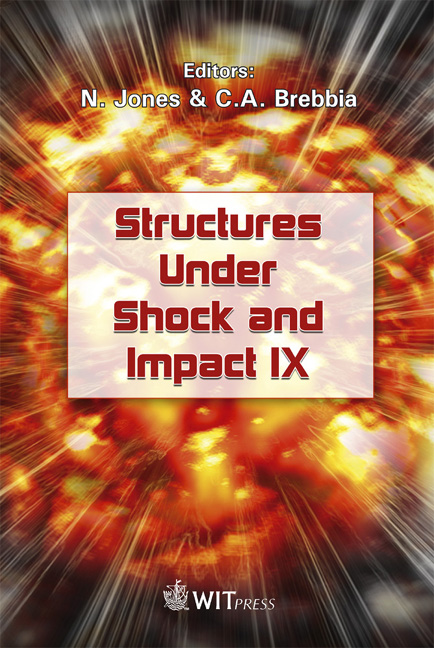Strain Rate Effect In Material Testing Of Bulk Adhesive
Price
Free (open access)
Transaction
Volume
87
Pages
10
Published
2006
Size
808 kb
Paper DOI
10.2495/SU060111
Copyright
WIT Press
Author(s)
W. Pan & R. Schmidt
Abstract
Due to its high energy absorption and flexibility in joining different materials, adhesive bonding is applied increasingly in automobile and aircraft structures that may be subjected to high loading rates and large dynamic loads encountered in a crash or impact. Simulation of the dynamic response of bonded structures needs reliable numerical models accounting for the strain rate effects. Unlike that of steel, there is still no standardized testing procedure for adhesive materials designed for crash or impact loading conditions. Hence, how to obtain and transfer the dynamic test results to numerical models is an important issue for simulation. Besides using empirical formulae for material models, alternatively strain rate effects are frequently taken into account by direct implementation of experimentally determined data as material input curves, e.g. in finite element codes like LS-DYNA etc. Each of those curves consists of a plot of stress vs. strain within constant strain rate, but due to the acceleration of the specimen and its yielding within the gauge length, mostly the strain rate is not constant. Different kinds of strain rate e.g. nominal, averaged, actual strain rate etc. are discussed in this paper. The actual strain rate increases during the entire high-speed loading process of the test specimen. Frequently the plots of strain rate vs. time exhibit strong oscillations. Often even the designated loading velocities are not reached by far. Thus using experimentally determined stress-strain curves for the designated loading velocity without any consideration of the real strain rate evolution during the experiment may lead to insufficient accuracy. In this paper, a conversion method is suggested for interpreting such stress-strain curves despite the increasing strain rate during high-speed loading experiments and to obtain the corresponding stress for explicit algorithms used in transient analyses. Keywords: strain rate, high-speed loading, adhesives, crash simulation.
Keywords
strain rate, high-speed loading, adhesives, crash simulation.





